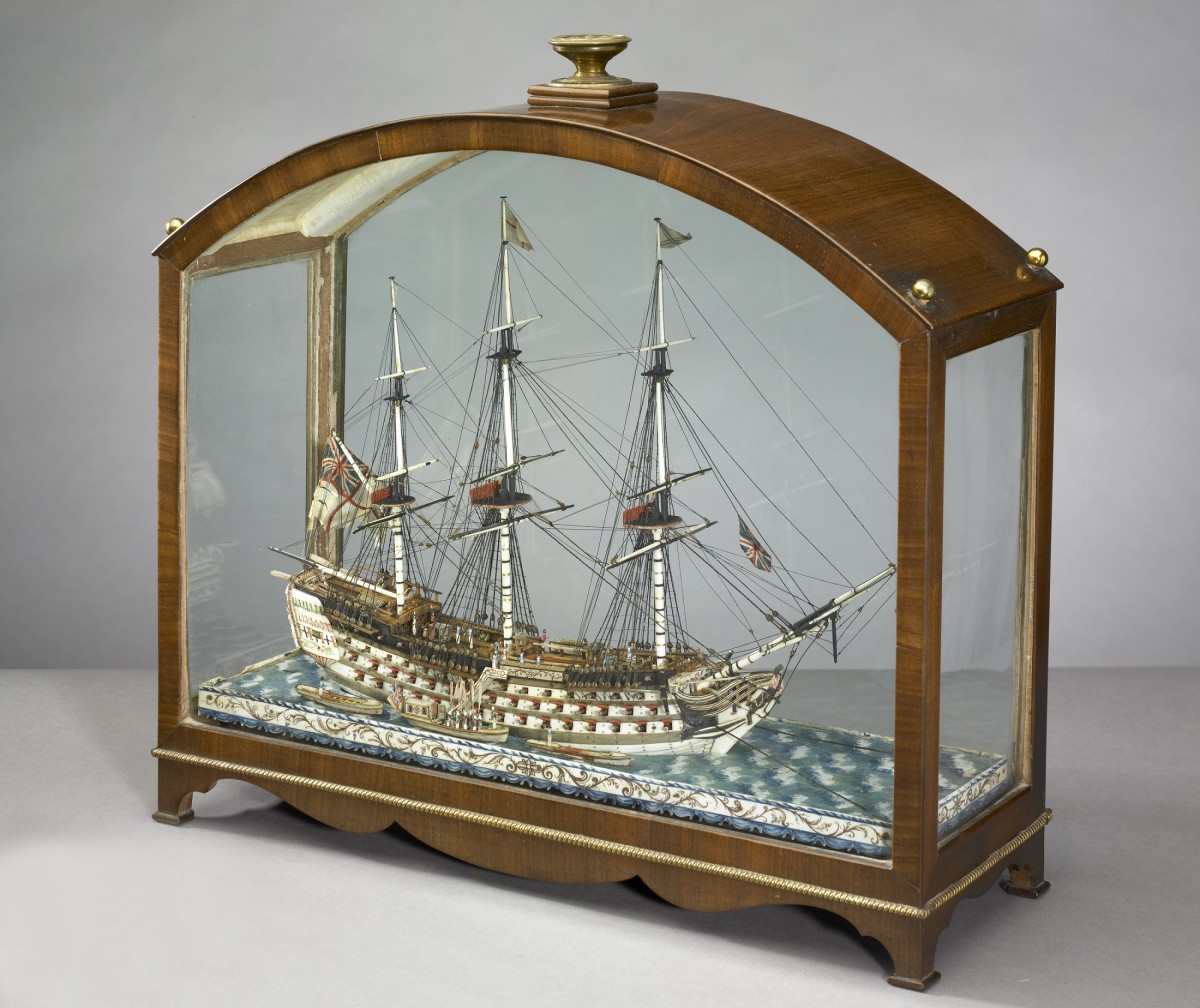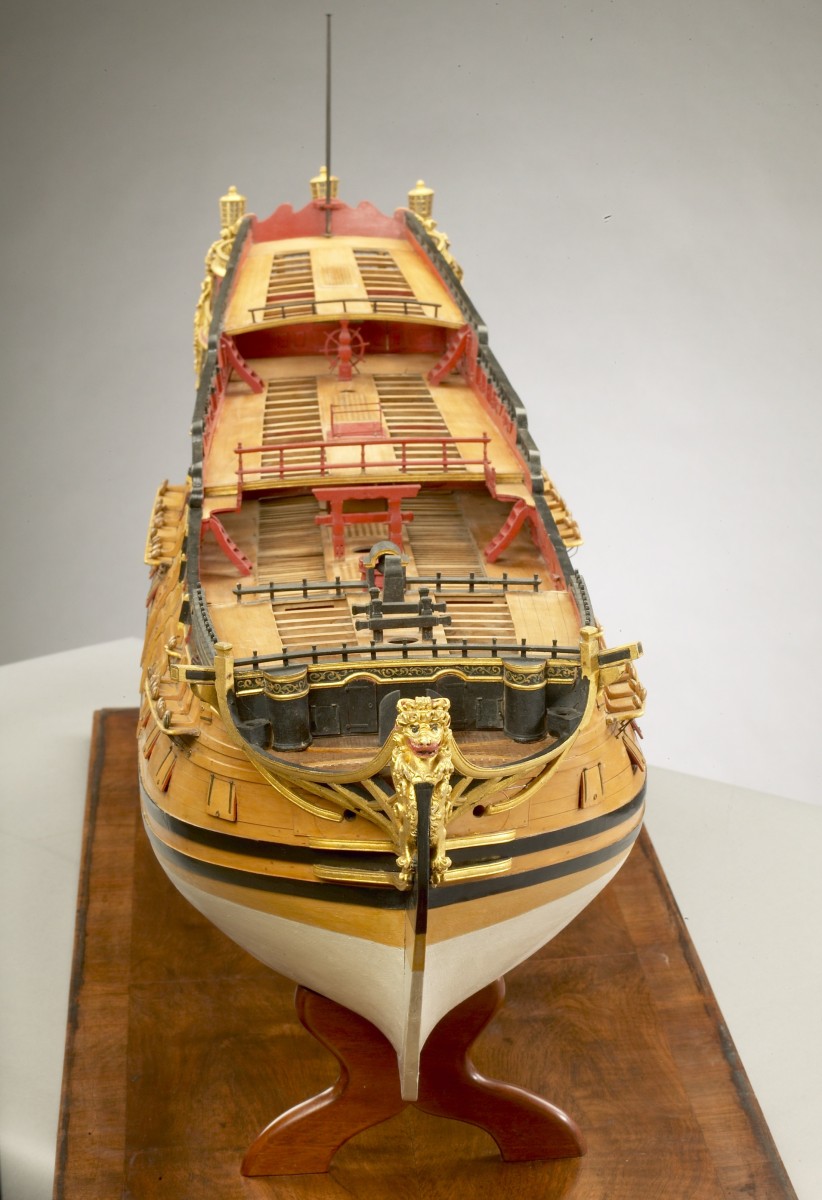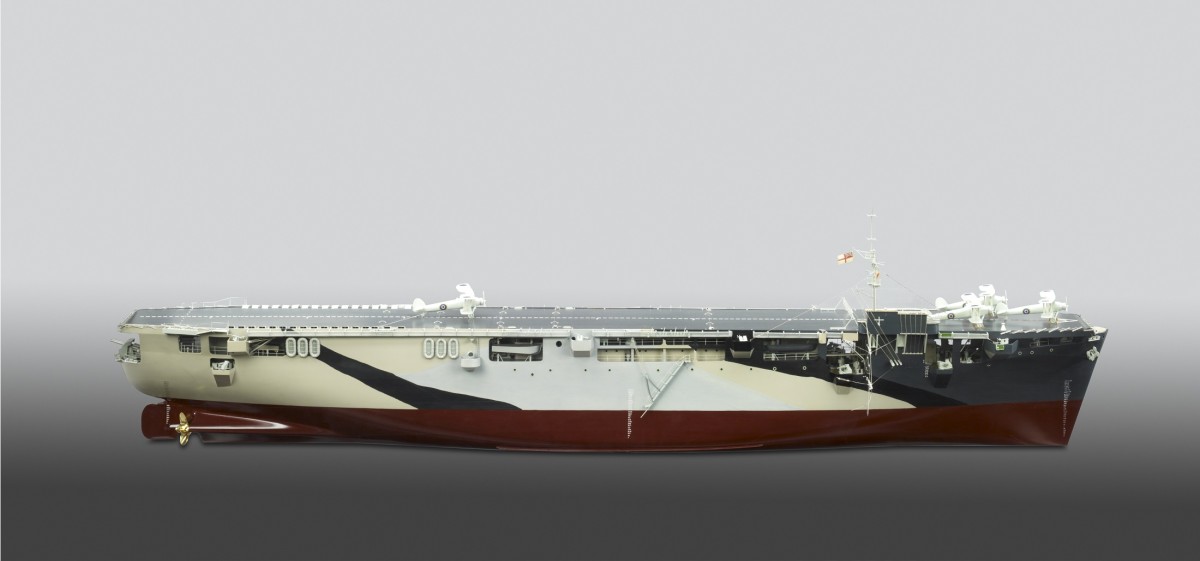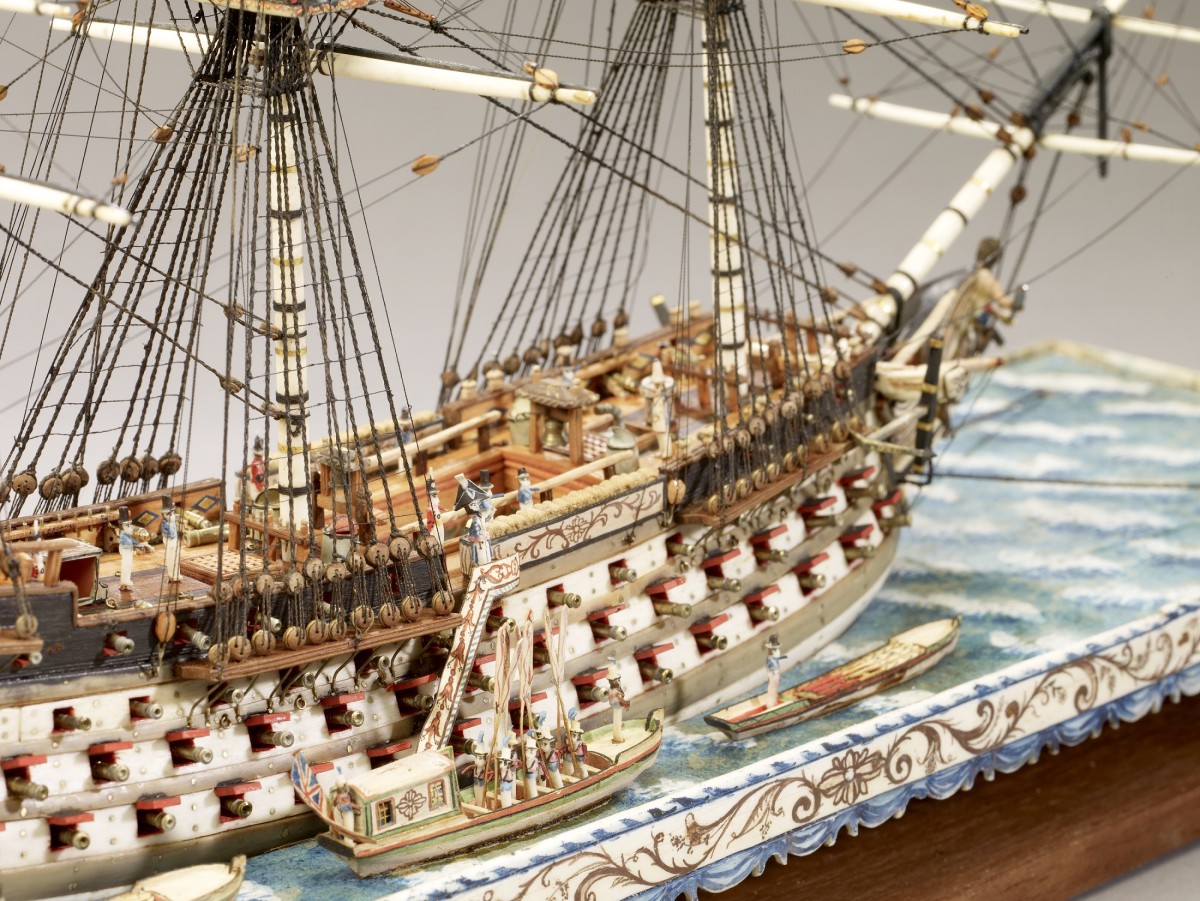Ahoy there!
Set sail directly from downtown Toronto with the ferry impressive Thomson Collection of Ship Models.

British. Three-decker 100 Gun Warship with Admiral's Barge, Prisoner of War Model, 1795-1815. Bone, some painted; baleen; wood; metal foil (gold?); fabric flags, painted; painted ivory (?); copper alloy; cotton/linen lines; painted paper and painted bone on wood base. Case estimated to be contemporary with ship, Overall (with inner base): 27 x 8.5 x 37 cm. The Thomson Collection at the Art Gallery of Ontario. © Art Gallery of Ontario AGOID.106285
Looking for a sea change? Venture below deck and embark on a nautical voyage through time, courtesy the cool depths of The Thomson Collection of Ship Models at the AGO. To get you into ship-shape, listen to the audio guide, courtesy of Simon Stephens, curator at the National Maritime Museum in London, U.K., before you stroll between the custom-built display cases, designed by Frank Gehry to mimic ocean waves, in search of these and other marine masterpieces:
Two-decker 70-Gun Warship, Edinburgh, Dockyard Model, 1721
Just as its name implies, this two-decker warship comes equipped with 70 miniature guns. Built at 1:48 scale, it’s crafted from fruitwood with exquisite hand-painted details. Take a look at the very front of the model (the bow) and you’ll notice a sculpted figurehead shaped like a lion with a crown. Look up and you’ll see a full-size replica of this beautiful carving beside the case to help give you a sense of the model’s miniature scale. Last tidbit: do you see those missing deck planks? They’ve been intentionally omitted to help you see inside the gun decks of this Royal Navy warship.
British Escort Aircraft Carrier, HMS Activity, Builder's Model, 1942
Fast-forward through naval history and you’ll arrive at this model of a merchant ship, purchased by the Royal Navy during WWII and converted into an aircraft carrier to support the war effort. To convert it to military service, the hull of the ship was repainted with dazzle paint (as shown in the model) to camouflage it in the waves on the horizon. Then, everything above deck was removed to make room for a landing strip, equipped with a steam catapult to launch Royal Air Force biplanes over the waves and into the sky. Woah! After surviving the war, this ship was converted back to merchant service and it sailed peacefully for a few decades before being decommissioned in the 1960s.
British or French Three-decker 100-Gun Warship with Admiral's Barge, Prisoner of War Model, 1795-1815 (pictured at top and below)
Encased within a case, this model adds a little extra drama by depicting a realistic scene from its time in service. Carved sailors on the ship are depicted standing, with their oars tossed in salute, for the high-ranking naval officer coming aboard from the much smaller Admiral’s Barge docked alongside the ship. Look closely and you’ll notice just how small the carved figures had to be in order to preserve the miniature scale. Given the immense size of this vessel, other creative materials were needed to preserve the scale of the ship’s riggings. Human hair, horsehair or strands of silk were used in most models to replicate ropes. These materials are all extremely fragile and most models do not have their originals intact. Luckily the sails and riggings of this model are all original, a rarity appreciated by discerning collectors and art-goers alike!
The Thomson Collection of Ship Models is located on the Concourse Level and is included with single-entry tickets, AGO memberships and the AGO Annual Pass – free for everyone 25 and under. For more information and to plan your nautical voyage, visit AGO.ca.
Come check it out, and don’t forget to download the audio guide before you arrive!
Are you an AGOinsider yet? If not, sign up to have stories like these delivered straight to your inbox every week.




